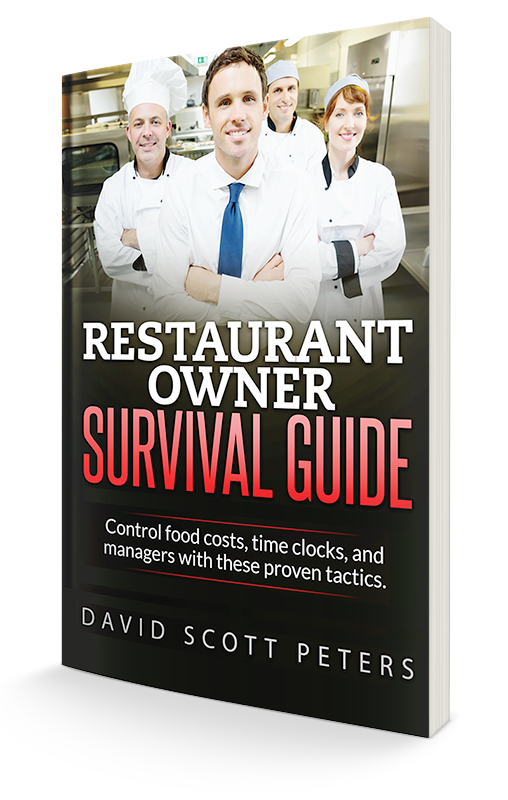Cutting Restaurant Costs
I originally wrote this article in the fall 2008 when the economy was really starting to hit my members where it hurt. And many of my members, because they have put systems such as these in place, have weathered the past two years much better than they expected. It’s all about operating at the lowest cost possible to maximize every dollar that comes through the door – in good times and in bad times.
So here are five easy-to-implement systems that will help you weather any economic storm – from the economy to slow tourist traffic – and also help your business in the long run.
- Raise prices. If you’re feeling the pinch, you could have no choice. A mistake would be to start ordering lesser quality substitutions, such as catfish instead of grouper. People who eat in your restaurant on a regular basis have come to expect a certain level of quality. If you start offering lesser quality ingredients, it will be noticed, and you’ll pay the price in the long run. And you don’t have to raise prices by much to have an impact, as long as you’re implementing changes in other areas.
- Purchase smarter. This is a two-parter.
- First, order a descending dollar report. You can get this from your vendor. It shows what you spent the most money on down to the least amount of money. This isn’t necessarily in volume, but in price per item. It’s not that I ordered 10 cases, it’s that I spent $1,000 — which could have been 1 case. Based on these figures, you can try to find like or better products at cheaper prices, which can have a huge impact on your business. You can take something you usually spend $3,000 a month on and get it down to $2500. Attack the next thing, say it’s $2,000 a month on down to $1500 and so on. Work your way down the report, cutting dollars off each item you order until you get to the bottom and can’t cut any more. You don’t want to sacrifice your quality, so it won’t work on every item, but this can be huge. I’ve had members cut their spending by 5, 7, even 10 percent.
- Second, get a prime vendor agreement. Rather than order small amounts of product from a large number of food distributors, you’re better off to order most, if not all, of your product from one distributor. Yes, you might be getting a killer deal on cheese from one vendor, but in the meantime, you’re getting railed in your janitorial and paper items from another. Cherry picking won’t get you far these days. It’s no longer to your advantage to purchase this way. A prime vendor agreement will make a huge impact on your bottom line, cutting percentage points off your operations costs, guaranteed.
- Recipe costing cards. Create a recipe costing card for every item on your menu – including your bar drinks. Include everything down to the single piece of lettuce. If you’re a quick service restaurant, you can include the cost of the to-go packaging. Making these cards and training everyone to them eliminates waste and over-portioning. Plus it provides a great training tool.
- Menu engineering. Sit down and take a long hard look at your menu. If you have them at your disposal, run a few reports through your POS system. Look at your item-by-item sales mix report and your key item report. Plot each item on a graph, with the number sold on the y axis and the profits made in dollars on the x axis. These will tell you what items are ordered most often and how much they cost you to make. Combine your recipe costing cards with your POS reports, and you’ll see the dogs on your menu. The dogs are the ones that don’t sell, or the ones that do sell, but cost you money to sell. You don’t want dogs. You want stars. You want popular, high-profit menu items. Get rid of the dogs, highlight the stars. Encourage people to purchase the higher priced items on your menu.
- Waste sheets. All causes for waste are avoidable and are a direct result of a lack of management and training. Waste includes a burned steak, food that spoiled because it was buried in the back of the walk-in and wasn’t rotated properly, and serving portions that are too large (this ties in to the importance of recipe costing cards). The waste sheet includes what the item was, that it was wasted, why it was wasted and how much that cost. Some people also like to put how much money it would have been worth if you sold it. Keep track of what gets wasted, and you’ll see a drop in waste. It’s an automatic drop in your food cost.
Lean, mean, fighting machine
Whether we’re in a recession or not, these things will impact your bottom line. If you’re already doing these things, I think there are probably places you can still trim. Go back and look at the areas where you can make a difference.
And just imagine. These five suggestions focus purely on cost of goods sold. That’s just one area within your restaurant. There are margins all over your restaurant where you can have an impact.
To read more about cutting costs in your restaurant, read our free special report, Breaking Away from the Insanity: How to easily take control of your restaurant and make more money. Download it here.



